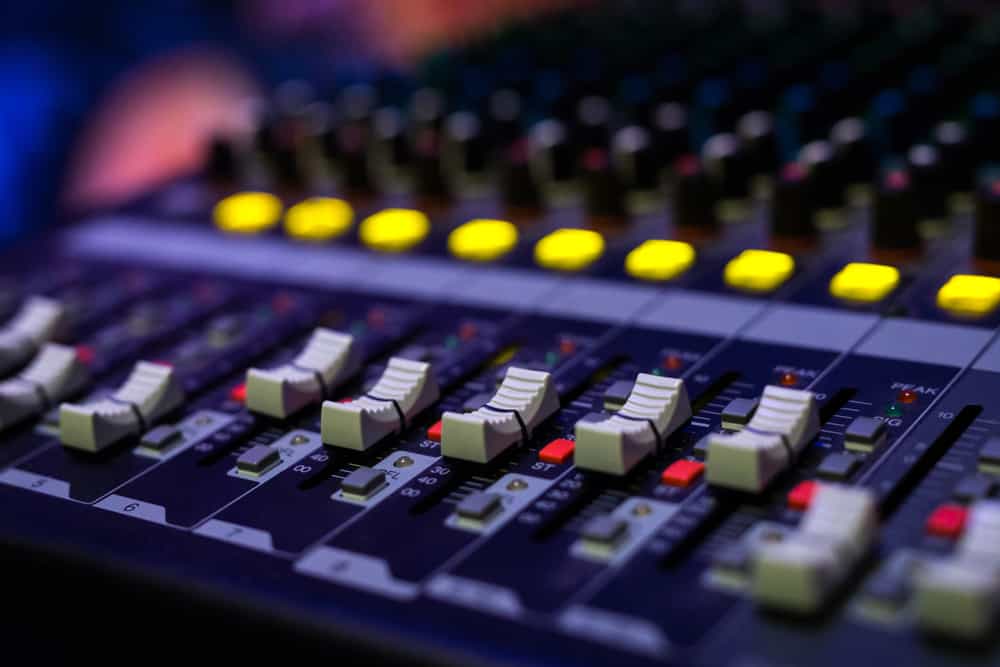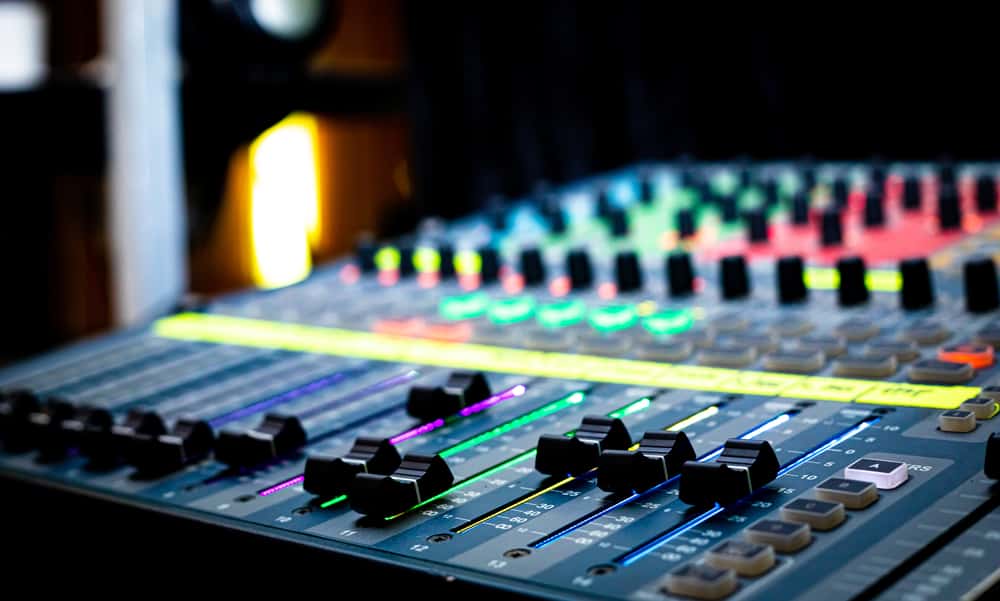
Many people working with mixers are often concerned about the longevity of their consoles and what effects turning it off and powering it back up again will have on their mixers. So, should you leave your mixer on? We have the answer.
It is good practice to leave your mixer on 24/7 due to the damage caused by powering it up and turning it on/off daily. But, if you’re using a digital mixing console rather than analog, it will manage heat better than older mixers so that you can turn it on and off without any issues.
Many professionals tend to leave their mixers on all day and all night because the power required to start a mixer up can damage the equipment. But with modern technology, it’s become outdated and is just a waste of time and money. If you’d like to find out exactly why it’s no longer necessary, we have the answer.
Why You Should Leave Your Mixer On
Older versions of mixers, analog consoles would typically take up the majority of space in a studio’s control room and the massive array of large metal parts, such as circuit boards, which would take a long time to warm up and reach thermal stability.
Consequently, it was a standard policy to leave analog mixers on all day and all night.
And, because it functioned through analog, not digital mechanisms (most notably with the EQ), the mixer settings would need adjusting according to fluctuations in temperature.
The heat fluctuations can also lead to a breakdown in components, which could require regular repairs and cost thousands of dollars to replace, as opposed to the increase in utility costs.
Why You Don’t Need To Leave Your Mixer On Anymore
As mixers have shifted from analog to digital technology and have also become far smaller physically, leaving your mixer on all the time is not as important.
Digital mixers, and even some of the newer analog mixers, are now equipped with heat management components that allow them to heat up and cool down quickly. Digital consoles can warm-up and cool down very quickly without making any significant to the sound they produce, apart from the front end and output stages.
Furthermore, consider your utility costs. It takes a lot of electricity to run a sound mixer 24/7. New technologies’ advances in heat management have significantly reduced the propensity for heating up and cooling down to damage your mixer or its components.
That’s not to say it’s impossible, but there are other factors to consider when it comes to protecting your mixer from damages and extending its lifespan.
How To Protect Your Mixer From Overheating
As we’ve already established, overheating and significant fluctuations in your mixer’s temperature are the enemy here.
1. Install Far Away From Heat Sources
One of the problems with sound mixers is they’re often installed next to several other pieces of technology that could be emanating heat as they operate, such as laptops, monitors, power supplies, mics, and so on. That heat will eventually make its way to your mixer if placed alongside the other overheated equipment.
Furthermore, you’re going to want to store and operate your mixer in a cool room with a room temperature that is 65ºF (18ºC) maximum. Direct sunlight can also damage your equipment, so try not to install it near any windows. Most people will install mixers in their basements to avoid this issue.
2. Choose Adequate Power Supply
The most common cause of overheating that people experience in their mixers comes in the form of your power supply unit (PSU). Ensure that your power supply can deliver the output necessary to run your mixer and that it will keep temperatures in a steady equilibrium.
3. Install In a Well Ventilated Place
Another common overheating issue has to do with insufficient ventilation. So, remember, the more access to clean, cool air your mixer has, the better. But this doesn’t mean your mixer should be located directly next to an air duct because of the additional heat it may generate.
You don’t want to blow fresh air into your device and potentially dislodge or damage some components like that either! Simply use your mixer somewhere that doesn’t get too stuffy and causes your mixer to overheat.
4. Leave Empty Spaces Around Your Equipment
This one should seem obvious to most, but you don’t want your mixer and your A/V equipment stacked on top of one another in one claustrophobic corner of the room.
What you’re going to want to do, instead, is space everything out to allow for adequate airflow between each device or piece of equipment, and you should leave about an inch of space between each piece of equipment.
If they have to be stacked, ensure that wherever you can find the fan (usually on top of the device, but sometimes at the side or on its back), there is open space for it to “breathe” and maintain airflow within the machine without any interruptions.
5. Beware Power Surges
One way that your mixer could take some severe damage is through power surges. Most developed nations like the US have relatively stable power levels. But, there are times called brownouts, where voltage is dropped in some hotter regions where air conditioners are continuously running.
And, if there are blackouts when the power is back up again, there can be massive power surges, while a factory shutting its machinery down for the night could cause a power surge in industrial areas. Even in buildings close to sports stadiums, powering up and turning off massive stadium lights can cause power surges.
These power surges can potentially wreck your mixer due to the sudden rise in voltage which will reverberate through your equipment when plugged into the power supply. The good news is that power surge strip protectors can help, but short-term spikes may be too much for them to handle. It isn’t commonplace, but there is certainly the potential for a power surge to damage or even destroy your mixer if you leave it on at all times.

6. Install Ventilation Fans
Fans can provide a lot more air, which, in turn, keeps your equipment cool by actively keeping your mixer’s components cool. The ideal setup would have two fans; a fan to pull cool air into the equipment’s casing and another to push hot air out.
7. Avoid Dust
Dust is harmful to all electronics and A/V equipment because it can prevent air from traveling through it and negatively affect ventilation mechanisms, such as those created by fans.
To prevent the buildup of dust, you should open your mixer once a month or so, clear it of dust with a microfiber cloth wherever possible and get your console operating at its best. However, consult the instruction manual to ensure that you’re opening it per the manufacturer’s instructions. If you get this stop, you could make the warranty void.
Conclusion
So should you leave your mixer on? The question largely depends on what technology you’re using. But, if you have a digital mixer, you typically don’t have to. Your number one objective should be to avoid fluctuations in heat and other potentially harmful factors such as power surges and dust from permanently damaging your equipment.
Most modern mixers have a preamp built-in (you can learn more here).

